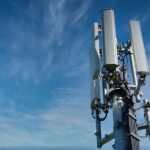
Fiber Optics and Smart Cities | V1 Fiber
How Smart Cities and Fiber Optics Work Together
Cities have existed since the beginning of civilization, but they are evolving in a new direction in the modern era. Rather than just a collection of streets and buildings that people navigate and use, cities are becoming intelligent, leveraging new technology to serve citizens in improved and novel ways.
To support those advancements, cities need top-notch internet connections. Data transmission needs to happen in a matter of nanoseconds, with computing processes being completed nearly as fast so citizens and officials can get the information they need. Fiber internet can help this happen. Whether leaders use fiber optics in transportation, communication, or utilities, they can reap the benefits of fiber in their smart city.
Fiber Optics in Transportation
A fundamental way urban planners in smart cities use fiber optics is by integrating it into transportation. Effective public transit can make a city more appealing to people looking to relocate to an area while potentially adding economic value to cities.
Modern transit users want a level of responsiveness that is best powered by fiber optics. Sensors and servers dedicated to tracking a city’s buses and trains can deliver real-time updates to riders, alerting them of delays. This adds value for the average citizen and improves quality of life.
Fiber optics can also power intelligent traffic lights that are responsive to increases in traffic flow and bottlenecks, adjusting light times as needed based on real-time conditions. Older copper cables may not be able to efficiently and quickly transmit that much data.
Fiber Optics and Public Utilities
The future of smart cities will also include improvements to utility infrastructure. More localities and utility providers are moving to smart meters for their customers. This technology aims to make monitoring utility usage easier while reducing the staffing needed to read each meter. Smart meters and sensors can allow leaders to identify trends that can inform their decisions, such as whether a neighborhood needs additional electrical transformers or stormwater pumps.
Fiber Optics and Public Services
Citizens living with smart city infrastructure can also benefit from improved public services. Streetlights, garbage and recycling facilities, libraries, and more could all be automated so that citizens get the best use of them. With the high bandwidth you get with fiber optic cables, cities could set lights to come on in response to changing conditions, including bad weather.
Other facilities could be opened and monitored with minimal staffing. Imagine opening a library as a warming center during a winter storm without having to send personnel to the site. Cities could even create smart parking signs that communicate the appropriate rules for the location and time.
Fiber Optics and Communication
Officials often need to communicate with the general public, and embracing smart city technology benefits can make the process easier. More local and state governments have started using smartphone apps to get messages out to people. Fiber optic internet connections can allow cities to send messages faster and more securely without slowdowns because of latency or low bandwidth.
From emergency alerts to traffic notices, cities can connect with citizens in a more relevant and immediate way than previously available. If they invest in the infrastructure, these intelligent cities can ensure they have an informed citizenry.
Fiber Optics and Business
Intelligent cities can use fiber optics to attract and support businesses and entrepreneurs. More people than ever are launching businesses. These people are adding a lot of value to the economies they join. To attract this crowd, cities need to have the right resources. In addition to having co-working spaces and intelligent transportation, people want to know that they have access to reliable high-speed internet.
By adding fiber optics to a city, leaders give startups confidence that they will be able to connect to anyone in the world and grow their company. As a bonus, that investment attracts families to smart cities since modern school work requires high-speed internet access.
Smart Cities: Using Fiber Optics in Transportation and More
When officials look at the future of smart cities, they would be wise to see how they can incorporate fiber optics into their plans. Citizens can benefit from better daily services, including better transit thanks to fiber optics in transportation and more convenience thanks to fiber optics in communication. To see more of the possibilities of fiber optics, schedule a chat with V1 Fiber today.
https://blog.viavisolutions.com/2020/10/14/4666/
https://education.nationalgeographic.org/resource/smart-cities/
https://www.bloomberg.com/news/articles/2013-08-14/public-transit-is-worth-way-more-to-a-city-than-you-might-think
https://v1fiber.com/how-municipalities-can-benefit-from-fiber-optics/
https://v1fiber.com/how-fiber-optics-provide-fast-internet-now-and-for-the-future/





No Comments
Sorry, the comment form is closed at this time.